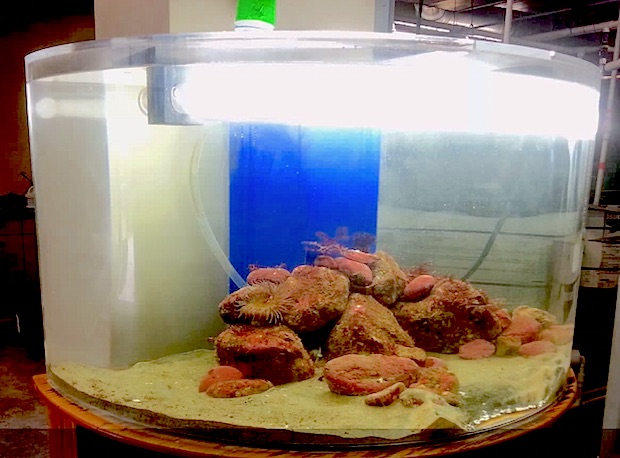As far as lighting technologies go, induction lamps are quasi-absent in the aquarium hobby and the biggest marketing push of this lighting technology has been geared towards growing terrestrial plants. One of the things that makes induction lighting efficient and long lasting is that it uses induction instead of electrodes to transfer energy to the lamp meaning that they last a really long time, and better yet, the lights are fully submersible.
This water-agnostic superpower of induction lighting was used at San Diego State University where an induction light “fixture” made by Inda-Grow was submerged in a cold water tank to light up various kelp, macroalgaes and some invertebrates. After eight weeks of the trial it is clear that the light-hungry kelp has made good use of the lighting from the Inda-Grow induction lamp by growing so much it already experienced several harvests.

We don’t know how efficient it is to use a hot, submerged light source in an otherwise cold water aquarium setup but the concept has our attention simply based on the submerged nature of the lighting source. We’ve had great expereiences with submerged LED striplights which don’t experience any reflection off the surface of the water, giving a rather neat and very pleasing uniform light distribution.
The large and bulky induction grow light has questionable practicality in most marine aquariums but we want to bring attention to this setup mostly for the benefits of having the light source beneath the water surface. We are so accustomed to lights being over our tanks that we assume that is the way it has to be but with many emerging technologies we hope unconventional lighting placement could lead to interesting improvements in lighting efficiency and distribution as well as some dramatic aquarium lighting presentation.



